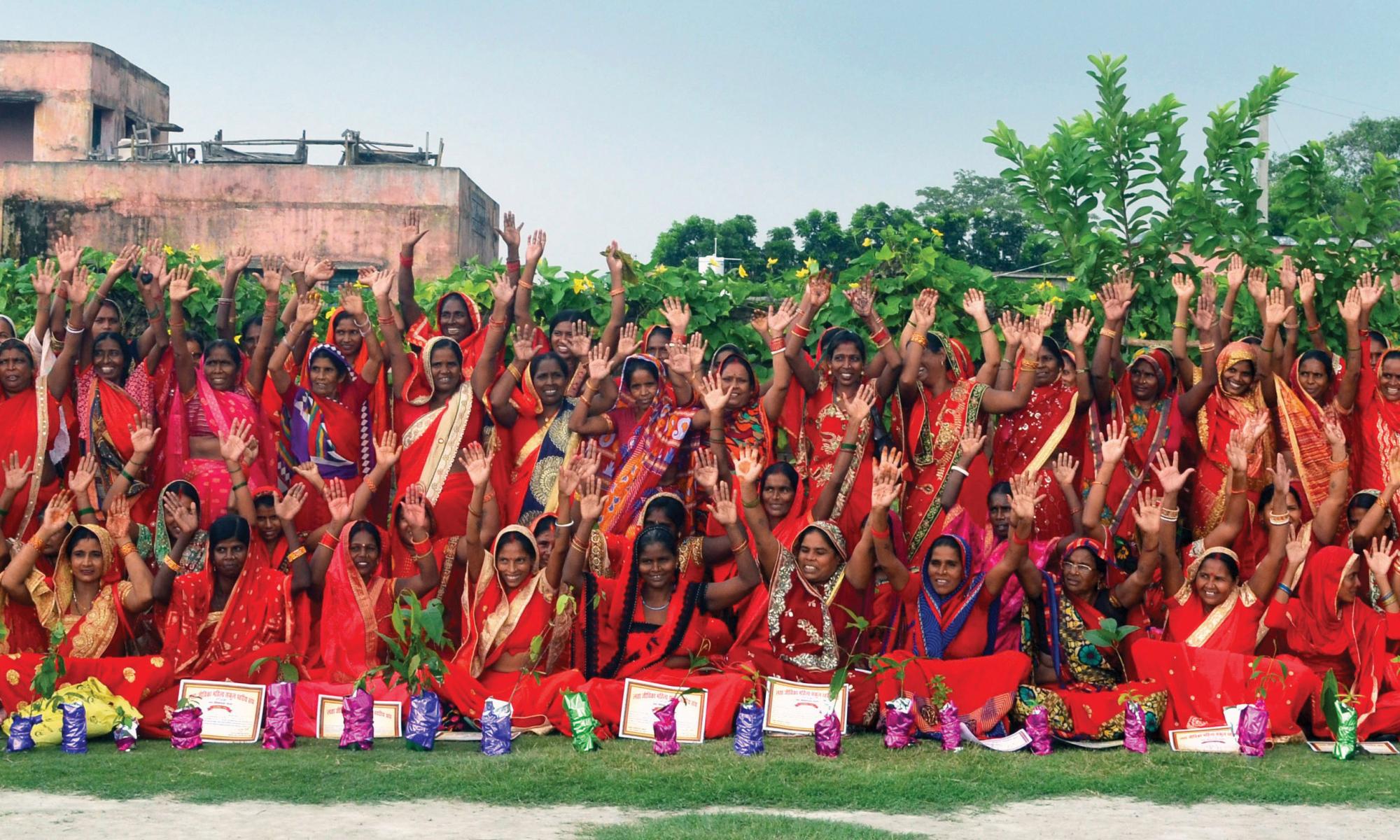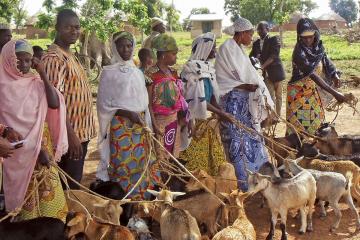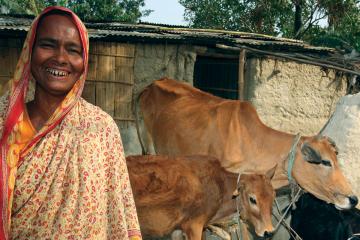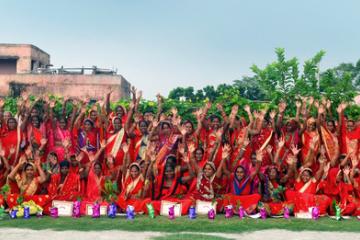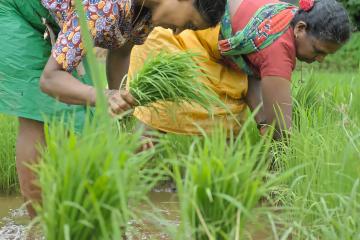
The Graduation approach is a proven "big push" program that has empowered people to pull themselves out of extreme poverty across at least twenty countries.

Fund Graduation programs. Graduation programs provide people in extreme poverty with a business asset, cash support, training and coaching, and social and financial inclusion. This innovative model has improved lives nearly everywhere it has been implemented by helping people earn more and build stable livelihoods.
Invest in the long game. Intensive support for 1-2 years can transform the course of life for people living in extreme poverty, setting families on a path to self-reliance. Improvements last for years after the program ends.
Support local adoption and government integration. This approach has been proven to help families break out of extreme poverty across at least twenty countries. Funders should back efforts to work with governments and communities to adapt and embed this proven approach into national systems, with the potential to reach many millions more people.
In 2024, 8.5 percent of people around the world—almost 700 million people—were living in extreme poverty. Extremely poor families face daily hardships like unstable jobs, limited financial and other resources, and inadequate access to education and health care, which make it difficult to gain economic stability and improve their circumstances. Families may rely on inconsistent work to get by, like seasonal farm jobs or domestic labor, making it hard to plan ahead and put enough food on the table. Rather than piecemeal support, these families need a combination of support that addresses multiple challenges at once.
The Graduation approach, a comprehensive “big push” anti-poverty program, helps the poorest households gain a strong foothold toward lasting stability and wellbeing. Pioneered by the NGO BRAC, this carefully sequenced, time-bound program provides families with a foundation to build on, starting with a business asset (like a large cash grant, livestock, or supplies) alongside skills training, basic cash and food support, and access to savings and health services. Families receive this comprehensive package for one to two years, after which many “graduate” into more stable, self-sufficient livelihoods.
This innovative model has improved lives nearly everywhere it has been implemented. Randomized evaluations in many countries, from Afghanistan to Bangladesh to Ethiopia, have shown that the Graduation approach, when implemented with fidelity to program design, helps participants transition into more stable employment and achieve a higher standard of living for themselves and their families. The program’s components build up participants’ resources, knowledge, and self-confidence.
For governments and funders looking to make bold investments in poverty reduction, Graduation programs offer a compelling option. In the long run, improvements in participants' incomes over time often exceed programs’ up-front costs. Policymakers can act boldly by expanding access to Graduation programs that help families escape extreme poverty and build lasting economic resilience. Scaling up this effective approach further can empower millions more families to realize their potential and build a better future.

Cost and design considerations
Costs vary based on location and the components included. One analysis estimated that costs of Graduation programs could be as low as $330 and as high as $1,900 per household, depending on local costs. But on average, the long-term benefits outweigh the up-front investment nearly everywhere it has been evaluated. In India, for example, a Graduation program generated economic gains that were nearly four times the program’s cost a decade later.
Given the scale of investment required, cost-effectiveness can depend on thoughtful design. In recent years, governments and NGOs have adapted and tested the program’s components to enable wider implementation. For example, in Egypt, a half-cost version of the Bab Amal Graduation program generated impacts that were more than half as large as those of the full-cost program. A nationwide livelihood program implemented by the Zambian government was similarly effective regardless of whether it included livelihood training and coaching sessions, suggesting that quality of training and coaching is important for effective Graduation programs.
But cutting too much can be counterproductive. In Ghana and Uganda, providing only a business asset or cash grant without complementary support didn’t lead to meaningful improvements in participants’ lives—a combination of components seems to be necessary to unlock improvements. Designing programs based on the extensive body of research on what works is essential to future programs’ success.
On design, BRAC’s Graduation Essentials guide suggests that implementers should ensure their programs include:
- A “big push” livelihood investment;
- Support for basic needs; and
- Coaching to build agency, know-how, and hope.
Programs should be designed and managed in a way that is:
- Sequenced so that the elements build on each other;
- Time-bound (generally 12 to 24 months); and
Adaptive to participants’ evolving needs and opportunities.

Read the Graduation Essentials guide for more on the evidence-based elements required for the Graduation approach to deliver long-term gains and put people on a long-term, upward trajectory out of extreme poverty.
On average, the long-term benefits outweigh the up-front investment.
Implementing partners
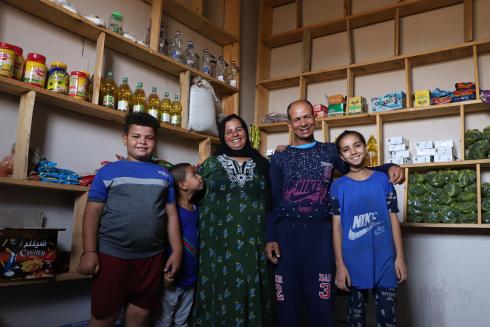
Implementers bring deep local knowledge, technical expertise, and a commitment to evaluation and learning as they bring these programs to life. Non-governmental organizations implementing and scaling Graduation include the following (listed in alphabetical order); this list is not exhaustive.
- Bandhan-Konnagar (India)
- BOMA (Africa)
- BRAC (worldwide)
- Concern Worldwide (worldwide)
- Fundacion Capital (worldwide)
- Human Development Egyptian Association (Egypt)
- Giving Without Limits Foundation (Egypt)
- Trickle Up (worldwide)
- Village Enterprise (Africa)
- The World Bank
Many governments have also integrated the Graduation approach into programs designed to reduce extreme poverty.
In India, the state of Bihar’s Satat Jeevikoparjan Yojana (SJY) program and the national Ministry of Rural Development’s Samaveshi Aajeevika program deliver the Graduation approach to hundreds of thousands of women. Egypt’s Ministry of Social Solidarity is scaling Bab Amal, a locally-adapted Graduation program that was rigorously evaluated by J-PAL affiliates, to reach 100,000 households by 2028. In the Sahel region, the World Bank and four partner governments are testing different Graduation approach models designed for government delivery at scale.
Building on its pioneering work in Bangladesh, BRAC launched its Ultra-Poor Graduation Initiative (UPGI) in 2016 to support continued expansion of the approach within government systems. Through direct implementation and technical advisory support, BRAC has further advanced the expansion of Graduation across diverse settings and countries. Today, BRAC is working with governments in six countries to integrate the essential elements of the Graduation approach into existing programs to achieve greater and more lasting impact for those furthest behind.
Each government partner adapts the Graduation approach to its specific population and circumstances, working through existing systems for cost-effectiveness and scale. For example, the SJY program in Bihar leverages existing community groups and networks to identify eligible participants, help participants acquire productive assets, and provide ongoing training and coaching. The Government of Niger delivered its Graduation program to households that were already receiving monthly cash transfers, reducing the time and effort required to identify eligible participants.
The role of foreign assistance and philanthropy
Bilateral, multilateral, and philanthropic donors played an essential role in testing and innovating on the approach before bringing it to scale. Between 2006 and 2014, CGAP and the Ford Foundation partnered to test, adapt, pilot, and build evidence around BRAC’s early approach in eight countries, helping refine program design and lay the groundwork for global scale through large-scale evaluations run by IPA, J-PAL, and others.
Development assistance and philanthropies helped mobilize resources for scale alongside low- and middle-income country governments. USAID’s Development Innovation Ventures (DIV), for example, made five awards related to scaling the Graduation approach. One of these was DIV’s largest-ever grant of $6.5 million to support a partnership between implementing organization Village Enterprise and the Government of Rwanda, designed to help more than one million Rwandans move out of extreme poverty by 2026.
This grant followed a 2017 award to Instiglio, which partnered with Village Enterprise, the UK Foreign, Commonwealth and Development Office, and an anonymous donor to develop a Poverty Graduation Development Impact Bond, a form of results-based financing designed to increase the effectiveness of development spending.
In 2019, Co-Impact selected a global collaborative, including the Bihar Rural Livelihoods Promotion Society (known as JEEViKA), Fundación Capital, the IKEA Foundation, and the World Bank’s Partnership for Economic Inclusion, to receive one of its first-round systems change grants. In 2020, BRAC was selected as an Audacious Project grantee, receiving more than $60 million in support to scale the Graduation approach with governments.
Donors invested in systems for scaling in fragile and high-poverty settings. These investments were critical to bringing the Graduation approach to those who are most vulnerable and empowering them to cope with unexpected setbacks. For example, USAID’s Bureau for Humanitarian Assistance (BHA) invested in Graduation as a strategy to promote food security and resilience in Uganda; implemented by AVSI, the program reached more than 13,000 households, half of whom were refugees, and resulted in improved economic outcomes, food security, and self-reliance.
The World Bank has supported scaling Graduation in fragile settings like Afghanistan and the Democratic Republic of Congo. Graduation was core to subsequent large-scale USAID BHA programs in Ethiopia, Madagascar, and Somalia.
Discover more from J-PAL
Building stable livelihoods for low-income households
Targeting the ultra-poor to improve livelihoods
Going the Last Mile: Lifting ultra-poor households out of extreme poverty
Discover more from other sources
Scaling Graduation Requires Standards
Inclusive Livelihoods LinkedIn Series
Report: Designing and Delivering Government-Led Graduation Programs for People in Extreme Poverty (PDF)
World Bank
From Extreme Poverty to Sustainable Livelihoods (PDF)
CGAP
Ultra Poor Graduation Field Handbook
World Vision
Photos:
(1) Participants of Satat Jeevikoparjan Yojana, a “big push” program in Bihar India, at their graduation ceremony. Credit: JEEViKA
(2) A family in the shop they started with support from Bab Amal, Egypt's version of the Graduation approach, implemented by the Sawiris Foundation for Social Development, BRAC, and other local partners. Credit: Sawiris Foundation for Social Development
